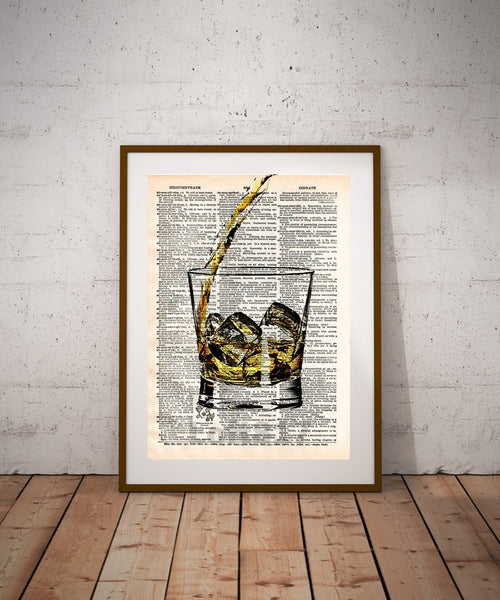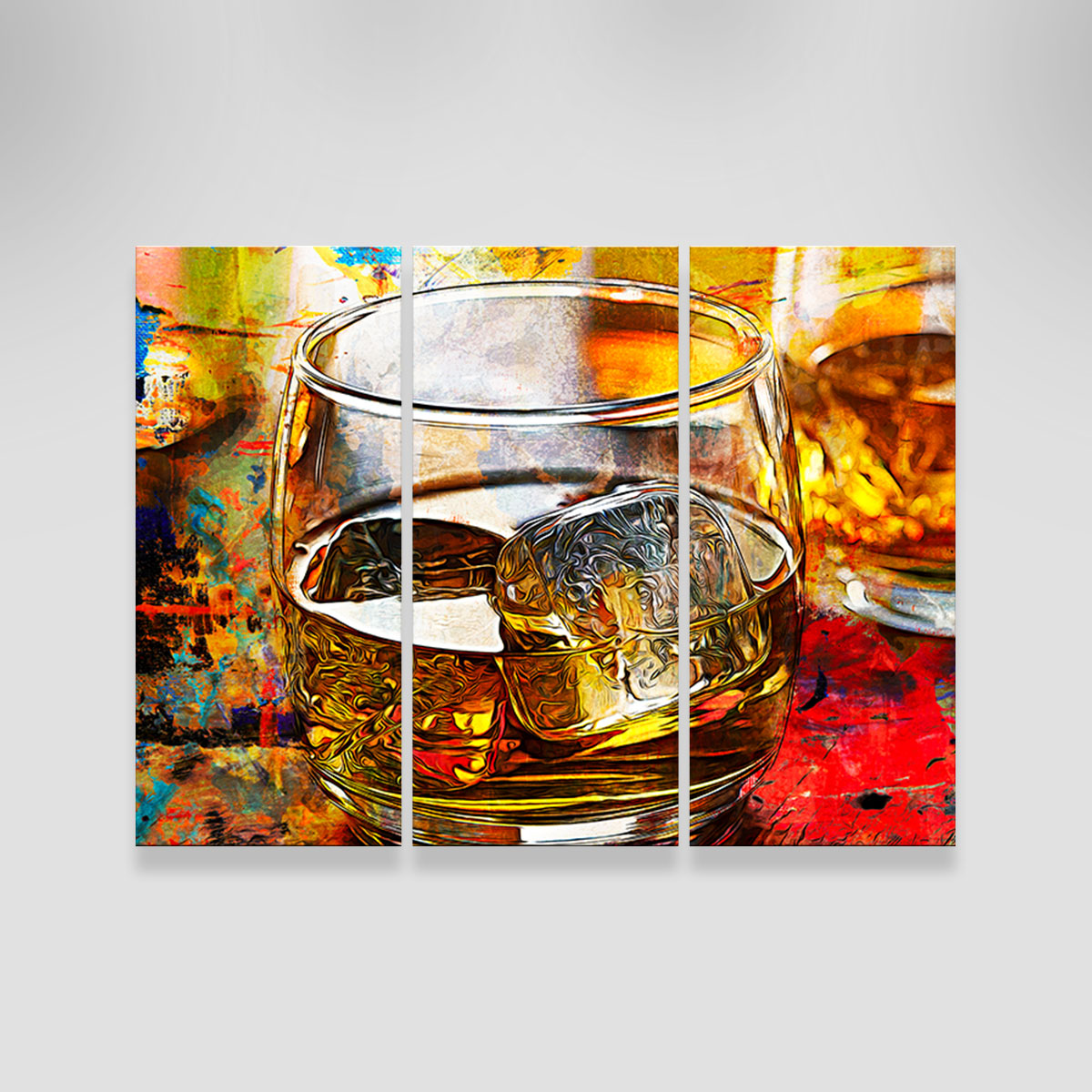Whiskey Art as a Declaration: Exactly How It Improves Home Décor
Whiskey Art as a Declaration: Exactly How It Improves Home Décor
Blog Article
The Value of Whiskey Art in Celebrating Heritage and Workmanship in the Beverage Industry
The intricate relationship between bourbon art and the celebration of heritage and workmanship within the beverage sector can not be overemphasized. Through attentively developed tags and bottles, whiskey brand names encapsulate their historic roots and the artisanal abilities that define their manufacturing techniques.
The Historic Roots of Whiskey
At the heart of whiskey's attraction exists a rich tapestry of historic roots that trace back to old worlds. The beginnings of whiskey can be connected to the purification methods of the Sumerians and Babylonians around 2000 BCE, where very early forms of fermented grain drinks began to arise. It was in the Center Ages that the art of purification developed substantially, particularly in Ireland and Scotland, leading to the production of whiskey as we understand it today.
The term "scotch" itself originates from the Gaelic word "uisce beatha," implying "water of life." This phrase emphasizes the social significance of scotch in Celtic cultures, where it was often related to routines, parties, and public bonding. By the 15th century, distillation became an acknowledged craft within reclusive neighborhoods, leading the way for the establishment of legal distilleries.
As trade routes expanded, scotch's popularity grew, transcending regional limits and catching the passion of aficionados worldwide. Realism Art. This historic trip mirrors not just the workmanship behind bourbon manufacturing yet also its important function in social and social contexts, marking it as a significant beverage throughout history
Artistic Expression in Branding
Whiskey branding stands as an engaging junction of virtuosity and business, where aesthetic identification plays a critical duty in forming customer understanding. The aesthetics of bourbon tags, packaging, and advertising materials reflect not just the brand name's story but additionally its core worths and heritage. With creative expression, distilleries communicate a narrative that resonates with customers, stimulating emotions and sparking links.
The usage of shade, typography, and imagery in branding offers to separate products in a saturated market. Standard motifs might evoke a sense of credibility and craftsmanship, while modern-day styles can represent advancement and forward-thinking. This calculated imaginative instructions improves brand name acknowledgment and commitment, allowing customers to forge an individual partnership with the bourbon they choose.
Furthermore, creative expression in branding typically acts as a party of local heritage. Distilleries frequently integrate regional signs or historical references right into their styles, developing a local color that invites customers to take part in a more comprehensive cultural experience. Inevitably, the artistry behind scotch branding not just boosts aesthetic appeal yet additionally enhances the overall story of the brand name, cultivating a deeper recognition for the craftsmanship and heritage embedded in each container.
Craftsmanship in Bottle Style
The virtuosity evident in scotch branding extends beyond visual identity to include the workmanship involved in bottle layout. Each bottle works as a vessel not just for the spirit within, yet also for the tale it tells concerning its custom, top quality, and origin. The design process needs meticulous interest to information, as aspects such as product, closure, and shape add considerably to the general assumption of the scotch.
Workmanship in container layout includes choosing top notch glass that can boost the scotch's shade and clearness, while likewise providing a tactile experience for the consumer. The silhouette of the container need to be both visually attractive and useful, commonly showing the heritage of the brand name. Numerous distilleries select one-of-a-kind shapes or printed logo designs that stimulate a sense of credibility and history.
In addition, the label layout and typography play an essential duty in connecting the brand's story. Bourbon Art. A well-crafted bottle not only captivates the consumer's eye however also strengthens the brand name's dedication to top quality and custom. In this method, the craftsmanship of bottle design comes to be a crucial facet of the whiskey experience, merging virtuosity with an extensive respect for heritage
Cultural Value of Scotch Art
Commemorating practice and craftsmanship, the social value of scotch art goes beyond simple looks, linking with the historic and social stories of the areas where it originates. Each container works as a canvas, click to find out more portraying the special tales, folklore, and traditions that have shaped regional whiskey-making techniques. The detailed styles often show the heritage of the distillers, incorporating signs and themes that reverberate with the culture and values of their areas.

In addition, whiskey art plays a check out this site crucial duty in public events and celebrations, acting as a concrete link in between individuals and their shared experiences. By appreciating the virtuosity in scotch packaging, consumers grow a deeper understanding and respect for the craft, eventually improving their satisfaction of the beverage itself.
Modern Trends in Scotch Discussion
In recent years, the presentation of bourbon has developed to mirror modern preferences and patterns while still recognizing standard craftsmanship - Bourbon Art. Distilleries are significantly focusing on visual elements that improve the overall drinking experience, bridging the void in between heritage and modernity
Ingenious container designs have arised, commonly integrating sustainable products and imaginative labels that tell engaging stories. Several brands now collaborate with neighborhood musicians, instilling their items with unique aesthetic expressions that reverberate with customers. Additionally, limited-edition releases are typically packaged in collectible containers, adding worth and charm for connoisseurs.

Conclusion
In verdict, whiskey art acts as a vital conduit for expressing the heritage and workmanship inherent in the drink these details market. Via detailed branding, innovative bottle styles, and culturally considerable imaginative aspects, scotch brands effectively honor their customs and get in touch with customers. This artistic narrative not only raises the gratitude of whiskey but likewise reinforces area identity and satisfaction amongst manufacturers. Eventually, whiskey art plays a necessary duty in preserving and celebrating the rich social tapestry of whiskey-making.


Craftsmanship in container style includes choosing premium glass that can improve the scotch's color and clarity, while also providing a tactile experience for the consumer. In this means, the workmanship of container style becomes a crucial aspect of the whiskey experience, merging artistry with an extensive respect for heritage.
In verdict, whiskey art serves as a crucial channel for expressing the heritage and craftsmanship intrinsic in the drink market.
Report this page